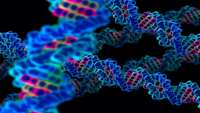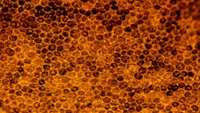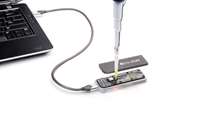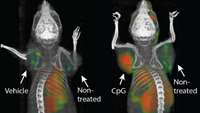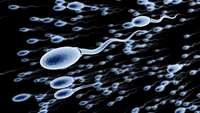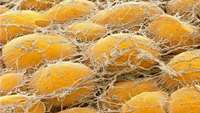Genome architecture’s surprising role in cell fate decisions
Scientists have long been reading the code of life – the genome –, as a sequence of letters but now researchers have also started exploring its three-dimensional organisation. In a paper published in Nature Genetics, an interdisciplinary research team of scientists from the Centre for Genomic Regulation (CRG) – including a Centro Nacional de Análisis Genómico (CNAG-CRG) group – in Barcelona, Spain, shows that the three-dimensional organisation of the genome plays a key role in gene expression and consequently in determining cell fate.
Discovery brings stem cell therapy for eye disease closer to the clinic
Scientists at the National Eye Institute (NEI), part of the National Institutes of Health, report that tiny tube-like protrusions called primary cilia on cells of the retinal pigment epithelium (RPE)—a layer of cells in the back of the eye—are essential for the survival of the retinas light-sensing photoreceptors.
Bioinformatics analysis to screen key genes implicated in the differentiation of induced pluripotent stem cells to hepatocytes.
Due to the lack of potential organs, hepatocellular transplantation has been considered for treating end-stage liver disease. Induced pluripotent stem cells (iPSCs) are reverted from somatic cells and are able to differentiate into hepatocytes.
USB stick can sequence DNA in seconds
It may look like an ordinary USB memory stick, but a little gadget that can sequence DNA while plugged into your laptop could have far-reaching effects on medicine and genetic research.
CRISPR gene editing may have just become a whole lot more accurate
CRISPR gene editing is an enormously exciting area for molecular biologists, opening up new opportunities when it comes to editing DNA to fight back against a wide range of medical conditions. Heck, it’s so versatile that it can even be used to encode a GIF into the DNA of a virus, demonstrating how it is possible to capture complex information in living bacteria.
Cancer ‘vaccine’ eliminates tumors in mice
Cancer ‘vaccine’ eliminates tumors in mice
Mesenchymal stromal cells for tolerance induction in organ transplantation
he primary challenge in organ transplantation continues to be the need to suppress the host immune system long-term to ensure prolonged allograft survival.
Human induced pluripotent stem cells and male infertility: an overview of current progress and perspectives
Recently, significant progress has been made in ART for the treatment of male infertility. However, current ART has failed to help infertile patients with non-obstructive azoospermia, unless donor sperm is used.
The role of adipose-derived stem cells in a self-organizing 3D model with regard to human soft tissue healing
The clinical phenomenon of inadequate soft tissue healing still remains an important issue. The occurrence of chronic wounds is correlated to the life span, which is still increasing in western countries.
Mouse decellularised liver scaffold improves human embryonic and induced pluripotent stem cells differentiation into hepatocyte-like cells.
Liver transplantation is the definitive treatment of liver failure but donor organ shortage limits its availability. Stem cells are highly expandable and have the potential to differentiate into any specialist cell. Use of patient-derived induced Pluripotent Stem Cells (hiPSCs) has the additional advantage for organ regeneration therapies by removing the need for immunosuppression.


